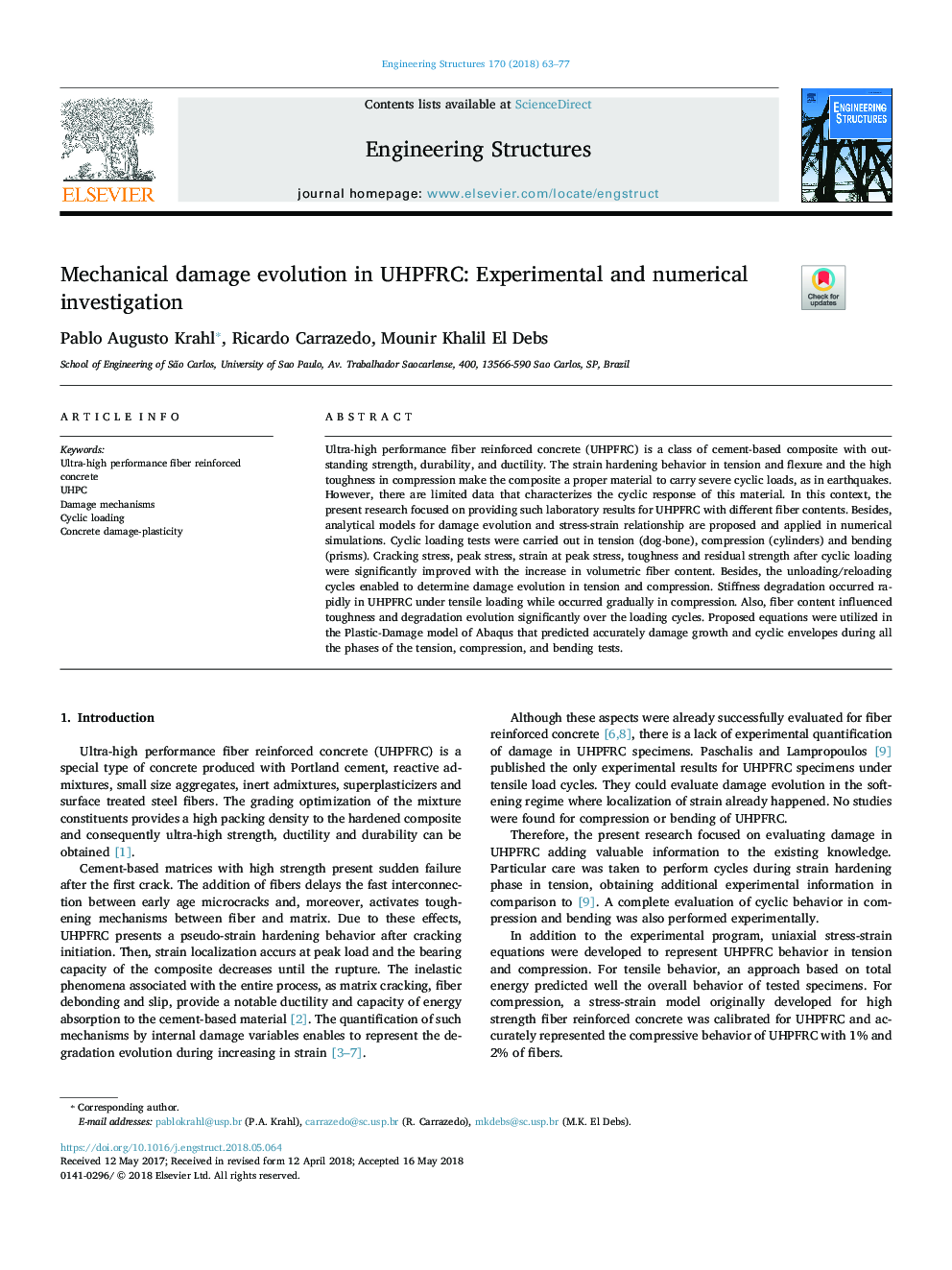| Article ID | Journal | Published Year | Pages | File Type |
|---|---|---|---|---|
| 6736613 | Engineering Structures | 2018 | 15 Pages |
Abstract
Ultra-high performance fiber reinforced concrete (UHPFRC) is a class of cement-based composite with outstanding strength, durability, and ductility. The strain hardening behavior in tension and flexure and the high toughness in compression make the composite a proper material to carry severe cyclic loads, as in earthquakes. However, there are limited data that characterizes the cyclic response of this material. In this context, the present research focused on providing such laboratory results for UHPFRC with different fiber contents. Besides, analytical models for damage evolution and stress-strain relationship are proposed and applied in numerical simulations. Cyclic loading tests were carried out in tension (dog-bone), compression (cylinders) and bending (prisms). Cracking stress, peak stress, strain at peak stress, toughness and residual strength after cyclic loading were significantly improved with the increase in volumetric fiber content. Besides, the unloading/reloading cycles enabled to determine damage evolution in tension and compression. Stiffness degradation occurred rapidly in UHPFRC under tensile loading while occurred gradually in compression. Also, fiber content influenced toughness and degradation evolution significantly over the loading cycles. Proposed equations were utilized in the Plastic-Damage model of Abaqus that predicted accurately damage growth and cyclic envelopes during all the phases of the tension, compression, and bending tests.
Related Topics
Physical Sciences and Engineering
Earth and Planetary Sciences
Geotechnical Engineering and Engineering Geology
Authors
Pablo Augusto Krahl, Ricardo Carrazedo, Mounir Khalil El Debs,
